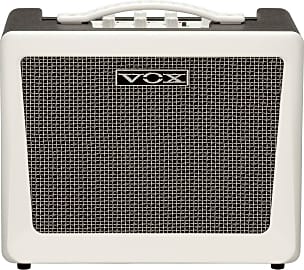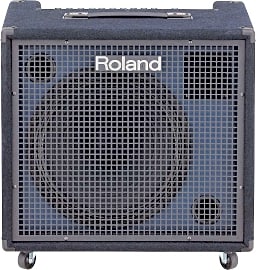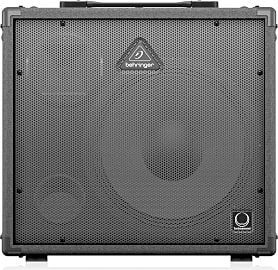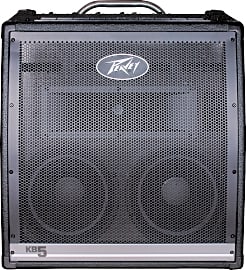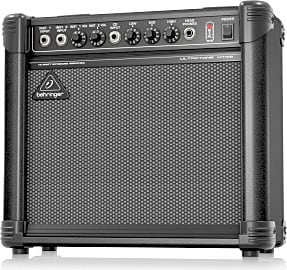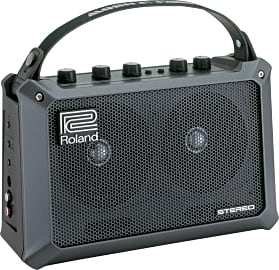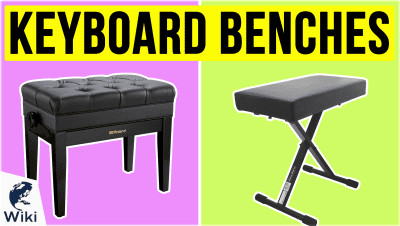The 7 Best Keyboard Amplifiers

This wiki has been updated 40 times since it was first published in October of 2016. For anyone who enjoys tickling the electronic ivories, you may be interested in punching up your volume and even adding some effects with one of these capable keyboard amplifiers. We've included models suitable for practice sessions as well as some heftier options that can accompany you on stage at venues large and small, all ranked by sound quality, portability, and durability. When users buy our independently chosen editorial choices, we may earn commissions to help fund the Wiki.
Editor's Notes
December 18, 2019:
First and foremost, a good keyboard amp should be clean, so the most basic electronic representation of a piano's sound can come through as unadulterated as possible. That said, good quality sound is something of a trick to the ears, as the perception of things like room tone provided by a simple reverb effect can make a digital instrument sound even more lifelike. That's why we looked for options that could play clean, but could also offer a little bit of character, either through EQ adjustments or onboard effects.
You also might notice that our ranking adheres relatively closely to a hierarchy of power as measured in watts, with a couple of exceptions where value superseded power, which was the case in the warm and inviting Vox VX50KB. We also added the Laney Amps Audio Hub AH300, which doesn't only boast an impressive 300 watts, it also offers five input channels for everything from MP3 players to guitars and vocals.
In reviewing the previous list, we found that the Coolmusic Personal DK-35 was the lone model that deserved banishment, as its primary driver proved more fragile than we first thought, succumbing to small amounts of damage when pushed that would result in some hum or crackling, and in extreme cases could render the entire speaker useless.
Why You Need A Keyboard Amplifier
That means your sound could be too muddy or too low in the mix, and you couldn’t make the adjustments you need.
As a keyboard player, you’ve got a lot of different options when it comes to hearing the sounds that your instrument creates. A lot of keyboards have speakers built right into their bodies, which let you enjoy whatever piano or other instrument effect you have selected. The main problem with these speakers is that they tend to be pretty low in quality, and they often fail to capture the sonic capabilities of a given keyboard.
Even the ones that don’t come with built-in speakers usually have a headphone jack that will let you listen to yourself playing or practicing in a way that won’t disturb the neighbors. This will also allow you to hear the quality of the instrument more precisely, provided you have a decent pair of headphones.
When it comes time to perform, however, neither built-in speakers nor headphones will suffice. You could place a microphone by the former, but you’d only be projecting inferior sound quality to the audience. And while headphones aren’t necessarily the answer, the path to better keyboard sounds does begin at the headphone jack, provided it’s a ¼-inch.
There are a lot of keyboardists who will take the signal routed through their headphone jack and send it directly through the PA system at whatever venue they’re playing for the evening. This is an okay idea, but it takes a lot of control over your sound out of your hands. Very few keyboards have built-in equalizers or other sound controls that could wrest a little of this control back from a given audio engineer, but for the most part you’re at the mercy of whoever works the sound board at the venue. That means your sound could be too muddy or too low in the mix, and you couldn’t make the adjustments you need.
With a dedicated keyboard amplifier, you send that signal out of your headphone jack (or out of a dedicated amplifier jack on nicer keyboards) directly into an amp that’s made specifically for producing high-quality piano tones. These amps often give you EQ powers, as well as volume and effects controls, giving you the most possible command over your sound and mix.
Which Keyboard Amp Is Right For You
Selecting a keyboard amplifier might not seem like a difficult undertaking at first, but as you get deeper and deeper into the subtle differences between one model and the next, it becomes a challenge to know which features are real advantages and which are just window dressing. We’ve narrowed down the field for you significantly, but you can do so even more for yourself by answering a few simple questions.
If you’re a keyboardist in a loud rock band with a pair of guitarists, a synth player, and more, there’s a good chance that you really only need something loud.
For starters, what kind of music are you playing? If you’re a keyboardist in a loud rock band with a pair of guitarists, a synth player, and more, there’s a good chance that you really only need something loud. How finely tuned your EQ is will likely be lost on the crowds that come to see you play. You can still aim for an amp with those extra features for when you’re playing at home or branching out as a solo performer, but for now, the loudest thing on here will probably do the trick.
If, on the other hand, you play in a genre that features little more than piano and vocals, you’ll want something very expressive. Three-band equalizers (allowing you to adjust bass, mid, and treble) are the most common, but if you can get your hands on an amp with a graphic EQ consisting of eight or more bands, you’ll have a lot more control over your sound.
Next, you should ask whether you’re going to use the amp for any other instruments. Some models feature additional inputs for guitar or vocals, so you can be a one-man band with a single amp, or share with another player. Effects like reverb are useful here, especially if they can be applied to individual channels, as this can help you create a sense of separation despite the fact that the tones are coming from a single speaker.
Lastly, you might need to evaluate your strength. Amplifiers rely on very large, very heavy magnets to do what they do, and often that results in models that can be extremely difficult to lug around. A young touring musician with a bit of muscle might not have a hard time managing a behemoth of an amp, but an older player bringing their amp to and from church functions might be better off with something a bit more portable.
A Brief History Of The Piano
The piano may seem like an instrument that comes before all others, especially in terms of composition. The image of brilliant composers hunched over the 88 ivories is an iconic one, to be sure. The piano, however, was not originally thought of as a means for composition, or as a stand alone instrument. It wasn’t originally regarded as the graceful instrument of artistic expression that it’s become today.
It was inspired largely by the clavichord and harpsichord, but its hammering design allowed for players to be much more expressive with the intensity of a given note.
Instead, the piano in its early years was largely thought of as we think today of the kazoo. It’s a simple instrument that anybody could play for a bit of entertainment. It was especially popular among the lesser members of the upper classes of the time, who couldn’t afford to commission symphonic performances, but who could hire an expert pianist, or simply play for themselves as a means of passing time.
It may also come as a surprise to you that the piano is only a little over 300 years old. The first of its kind is credited to Bartolomeo Cristofori in the early years of the 18th century. It was inspired largely by the clavichord and harpsichord, but its hammering design allowed for players to be much more expressive with the intensity of a given note.
Electric pianos eventually made their way onto the scene in the early 20th century, and many used real metal strings, magnetic pickups, and built-in speakers to create their sound. At the height of this style, musicians in the 1950s and 60s made popular the incredible sound of Fender Rhodes and Wurlitzer electric pianos, which can still fetch quite a bit of cash from modern collectors and musicians.


